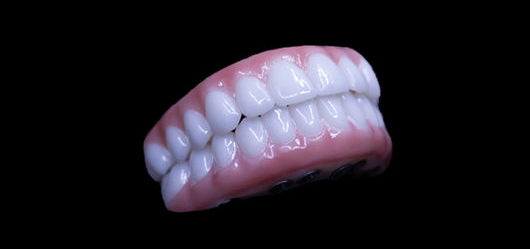10 Simple Techniques For Dental Sense
10 Simple Techniques For Dental Sense
Blog Article
Examine This Report on Dental Sense
Table of ContentsDental Sense Things To Know Before You Get ThisUnknown Facts About Dental SenseExcitement About Dental SenseEverything about Dental Sense
are clinical gadgets operatively implanted into the jaw to bring back a person's capacity to chew or their appearance. They give support for artificial (phony) teeth, such as crowns, bridges, or dentures. When a tooth is lost due to injury or condition, a person can experience issues such as rapid bone loss, defective speech, or adjustments to chewing patterns that cause discomfort.Oral implant systems contain an oral implant body and dental implant abutment and might likewise consist of an abutment addiction screw. Root canal procedure. The dental implant body is operatively put in the jawbone in area of the tooth's root. The oral implant abutment is generally affixed to the implant body by the joint fixation screw and expands through gum tissues right into the mouth to sustain the attached man-made teeth
(https://www.edocr.com/v/djpmklwo/matthewmusic33101/dental-sense)Framework of The Oral Implant System selecting dental implants, talk to your oral service provider about the potential advantages and dangers, and whether you are a candidate for the procedure. Things to consider: Your total wellness is a crucial aspect in identifying whether you are a good prospect for oral implants, how much time it will take to recover, and the length of time the dental implant may stay in area.
Cigarette smoking may affect the recovery process and lower the lasting success of the implant. The recovery procedure for the dental implant body may take numerous months or longer, during which time you generally have a temporary joint in place of the tooth. the dental implant procedure: Carefully comply with the dental health instructions provided to you by your dental service provider.
The Definitive Guide for Dental Sense
Implant failure can lead to the requirement for an additional operation to fix or replace the implant system. Brings back the capacity to eat Recovers aesthetic appearance Aids maintain the jawbone from shrinking due to bone loss Protects the wellness of the surrounding bone and periodontals Assists maintain adjacent (close-by) teeth steady Boosts high quality of life Damage to bordering natural teeth throughout implant placement Injury to the surrounding tissues throughout surgery, such as sinus perforation Injury during surgical treatment (for instance, crack of bordering jawbone) Poor function, such as seeming like the teeth do not attack together normally A sensation that the tooth hangs or turning in location arising from a joint screw loosening Implant body failure (looseness of the implant body) due to systemic infection, which may be a lot more most likely in individuals with unchecked diabetes mellitus because of regional infection in bone and gum tissues supporting the implant body due to delayed recovery, which might be extra most likely in people who smoke Trouble cleansing the periodontals around the implant, resulting in inadequate dental hygiene Without treatment periodontal illness Post-surgical pins and needles due to nerve impingement or damage Constantly inform health and wellness care carriers and imaging professionals that you have oral implants before any magnetic vibration imaging (MRI) or x-ray procedures.
FDA is not knowledgeable about any unfavorable events reported for MRI or x-ray treatments with dental implants. Oral implants systems are generally made from materials that follow international agreement standards of the International Company for Standardization (ISO) or ASTM International. These criteria have details of what makes a safe product.

A dental implant is a structure that changes a missing tooth. With screw-like devices, the specialist inserts a dental implant right into the jawbone, and it acts as an anchor for a man-made tooth, called a crown. A tool called a joint links the fabricated tooth to the oral implant. The crown is tailor-made to fit the individual's mouth and match the shade of their teeth.
Our Dental Sense Statements
Some people are not qualified for oral implant surgical treatment. It is for oral surgeons to operate on people with: intense illnessuncontrollable metabolic diseasebone or soft tissue disease or infectionIf these problems are dealt with, a person can have the surgical procedure. In, dental surgeons avoid operating on people with: If individuals with any of the above undertake dental implant surgical procedure, there is a greater risk of the dental implant stopping working.

Oral dental implant surgery is an individualized procedure. It's not the very same for everyone. But the complying with offers a basic review of what you can anticipate your dental professional, oral surgeon, periodontist or prosthodontist to do: Position the dental implant operatively. Provide you time to heal. Attach the message and last my link crown, bridge or denture.
Next off, your specialist will meticulously put the dental implant into your jaw. Your doctor will certainly rearrange your gums and shut the cut with stitches. If your implant is near the front of your mouth, your dentist will certainly make a short-lived tooth for you to wear till you recover. That method, you won't have a void in your smile while you recuperate.
The Of Dental Sense
Throughout the healing phase, your jawbone needs to fuse to the oral implant. This process can take anywhere from 3 to 9 months.
Once your dental implant heals, your dentist can affix the abutment (tiny port blog post) and your final restoration (crown, bridge or denture). This generally takes about one hour to finish and might call for a second minor surgical treatment. You should not feel any type of discomfort throughout your dental implant treatment due to the fact that your company will certainly make use of medication to numb your periodontals.
Report this page